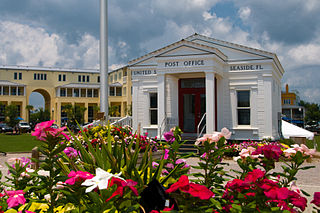 W
WNew Urbanism is an urban design movement which promotes environmentally friendly habits by creating walkable neighborhoods containing a wide range of housing and job types. It arose in the United States in the early 1980s, and has gradually influenced many aspects of real estate development, urban planning, and municipal land-use strategies. New urbanism attempts to address the ills associated with urban sprawl and post-Second World War suburban development.
 W
WChristopher Charles Benninger is an American-Indian architect and planner based in the city of Pune, India.
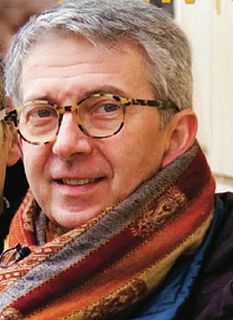 W
WPier Carlo Bontempi is an Italian architect.
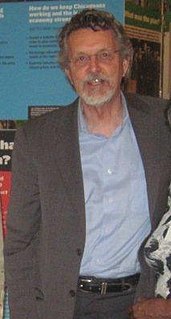 W
WPeter Calthorpe is a San Francisco-based architect, urban designer and urban planner. He is a founding member of the Congress for New Urbanism, a Chicago-based advocacy group formed in 1992 that promotes sustainable building practices. For his works on redefining the models of urban and suburban growth in America Calthorpe has been named one of twenty-five ‘innovators on the cutting edge’ by Newsweek magazine.
 W
WThe compact city or city of short distances is an urban planning and urban design concept, which promotes relatively high residential density with mixed land uses. It is based on an efficient public transport system and has an urban layout which – according to its advocates – encourages walking and cycling, low energy consumption and reduced pollution. A large resident population provides opportunities for social interaction as well as a feeling of safety in numbers and "eyes on the street". It is also arguably a more sustainable urban settlement type than urban sprawl because it is less dependent on the car, requiring less infrastructure provision.
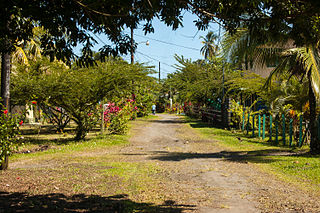 W
WConservation development, also known as conservation design, is a controlled-growth land use development that adopts the principle for allowing limited sustainable development while protecting the area's natural environmental features in perpetuity, including preserving open space landscape and vista, protecting farmland or natural habitats for wildlife, and maintaining the character of rural communities. A conservation development is usually defined as a project that dedicates a minimum of 50 percent of the total development parcel as open space. The management and ownership of the land are often formed by the partnership between private land owners, land-use conservation organizations and local government. It is a growing trend in many parts of the country, particularly in the Western United States. In the Eastern United States, conservation design has been promoted by some state and local governments as a technique to help preserve water quality.
 W
WCooper Robertson is an international architecture and urban design firm founded by Alex Cooper, in collaboration with the Driehaus Prize winner Jaquelin T. Robertson. It is headquartered in New York City.
 W
WAndrés Duany is an American architect, an urban planner, and a founder of the Congress for the New Urbanism.
 W
WLéon Krier CVO is a Luxembourgish architect, architectural theorist and urban planner, a prominent critic of architectural Modernism and advocate of New Traditional Architecture and New Urbanism. Krier combines an international architecture & planning practice with writing and teaching. He is well-known for his master plan for Poundbury, in Dorset, England. He is the younger brother of architect Rob Krier.
 W
WJames Howard Kunstler is an American author, social critic, public speaker, conspiracy theorist, and blogger. He is best known for his books The Geography of Nowhere (1994), a history of American suburbia and urban development, The Long Emergency (2005), and Too Much Magic (2012). In The Long Emergency he imagines peak oil and oil depletion resulting in the end of industrialized society, forcing Americans to live in smaller-scale, localized, agrarian communities. In World Made by Hand he branches into a science fiction depiction of this future world.
 W
WLand recycling is the reuse of abandoned, vacant, or underused properties for redevelopment or repurposing.
 W
WNew Urbanist Memes for Transit-Oriented Teens, also known as NUMTOT or Numtots and variations by its members, is a Facebook group dedicated to discussion, Internet memes, and general discourse surrounding New Urbanism and public transport. As of June 2021, the group has more than 219,000 members.
 W
WElizabeth Plater-Zyberk is an American architect and urban planner based in Miami, Florida. She is considered to be a representative of the New Urbanism school of urban planning, and an advocate of the New Classical school of architecture. She is also a co-founder and principal of the firm of Duany Plater-Zyberk & Company (DPZ).
 W
WSmart growth is an urban planning and transportation theory that concentrates growth in compact walkable urban centers to avoid sprawl. It also advocates compact, transit-oriented, walkable, bicycle-friendly land use, including neighborhood schools, complete streets, and mixed-use development with a range of housing choices. The term "smart growth" is particularly used in North America. In Europe and particularly the UK, the terms "compact city", "urban densification" or "urban intensification" have often been used to describe similar concepts, which have influenced government planning policies in the UK, the Netherlands and several other European countries.
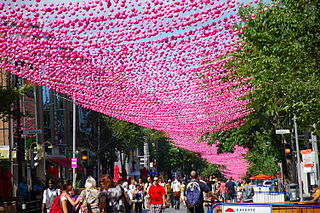 W
WTactical urbanism includes low-cost, temporary changes to the built environment, usually in cities, intended to improve local neighbourhoods and city gathering places. Tactical urbanism is also commonly referred to as guerrilla urbanism, pop-up urbanism, city repair, or D.I.Y. urbanism.
 W
WLike transportation in the rest of the United States, the primary mode of local transportation in Portland, Oregon is the automobile. Metro, the metropolitan area's regional government, has a regional master plan in which transit-oriented development plays a major role. This approach, part of the new urbanism, promotes mixed-use and high-density development around light rail stops and transit centers, and the investment of the metropolitan area's share of federal tax dollars into multiple modes of transportation. In the United States, this focus is atypical in an era when automobile use led many areas to neglect their core cities in favor of development along interstate highways, in suburbs, and satellite cities.Portland is "an international pioneer in transit orientated developments."